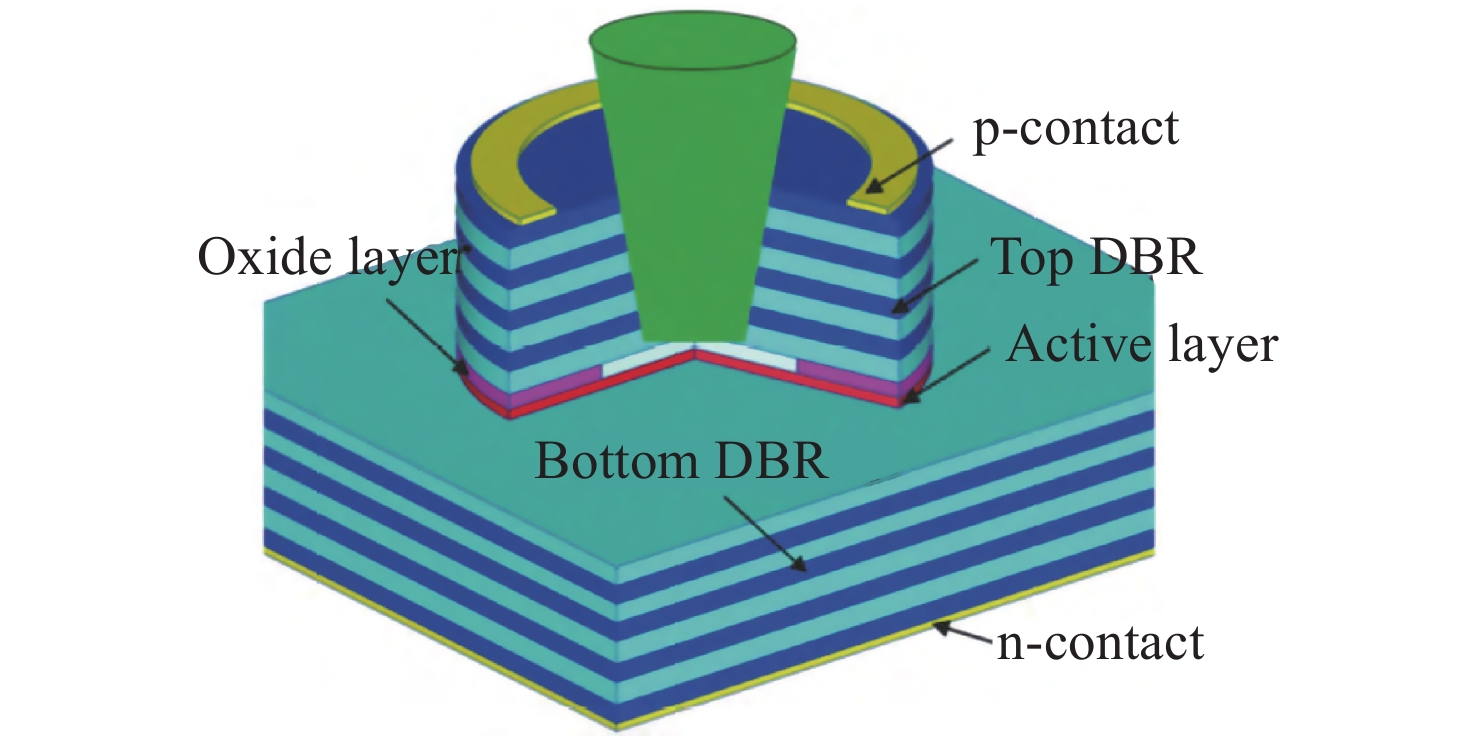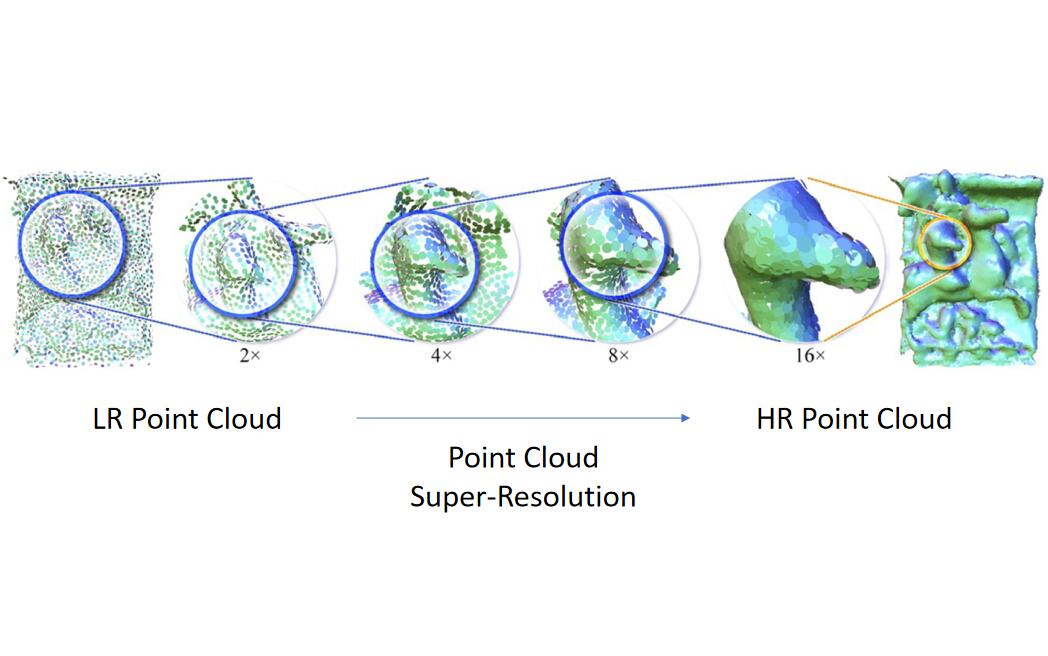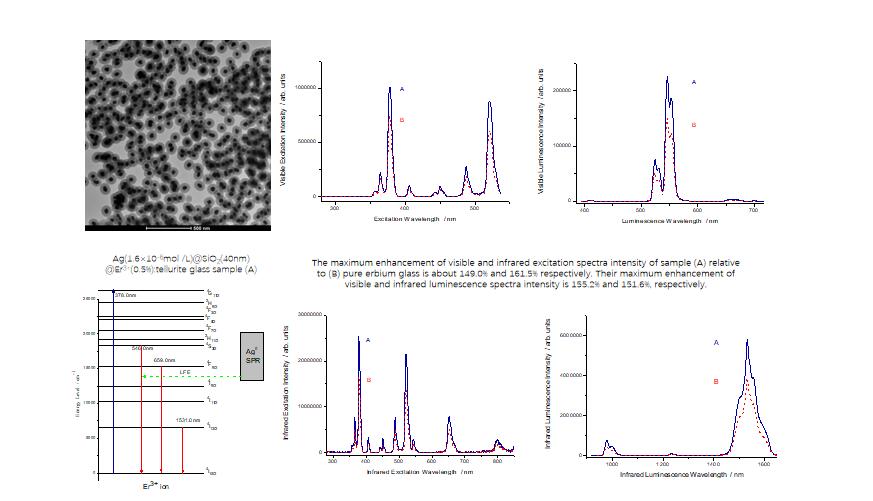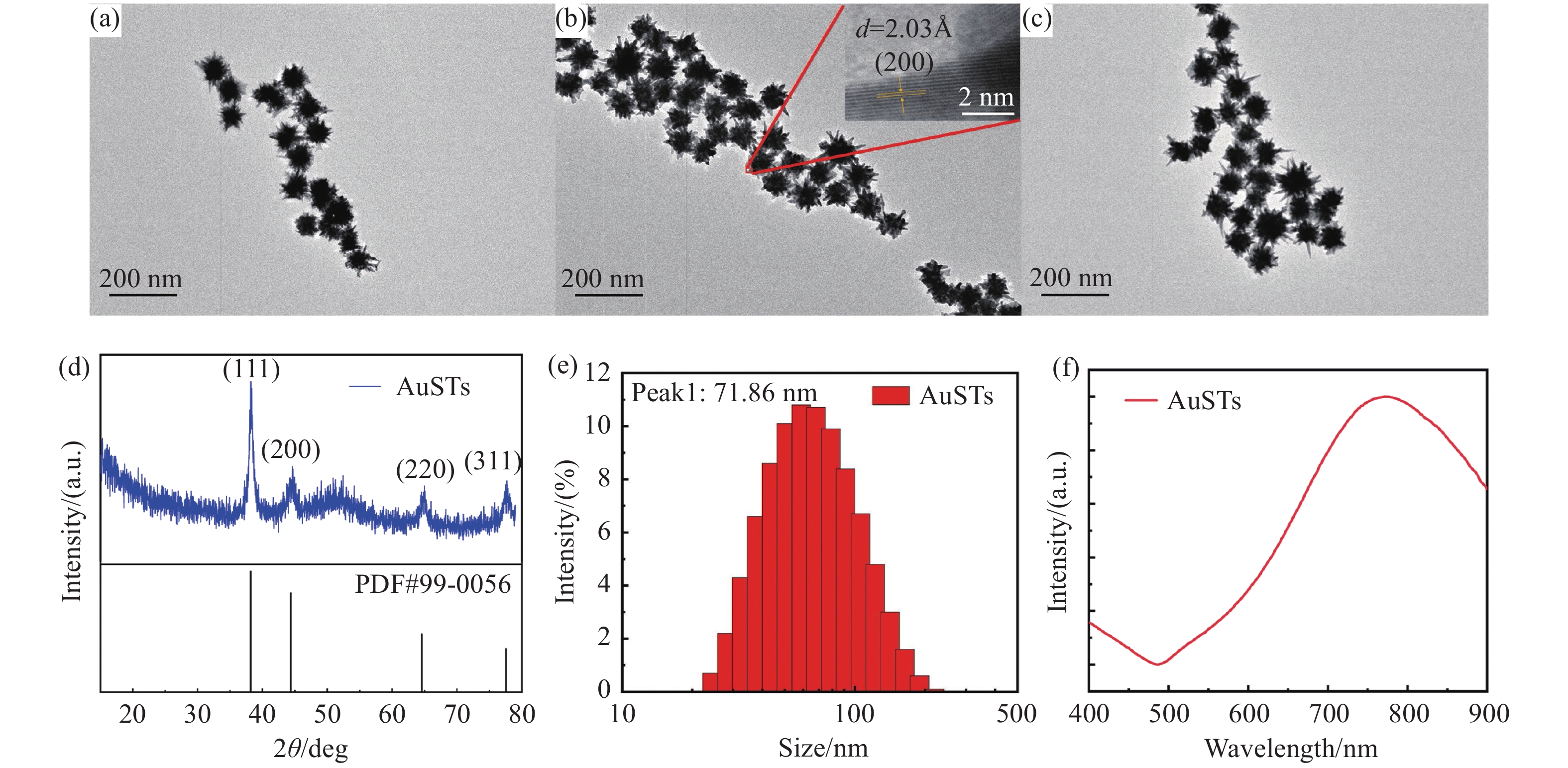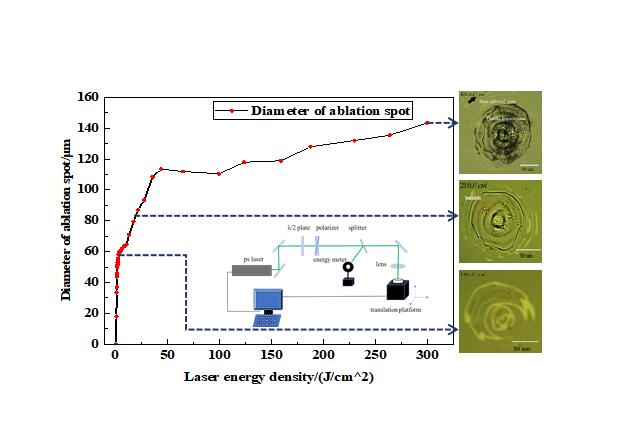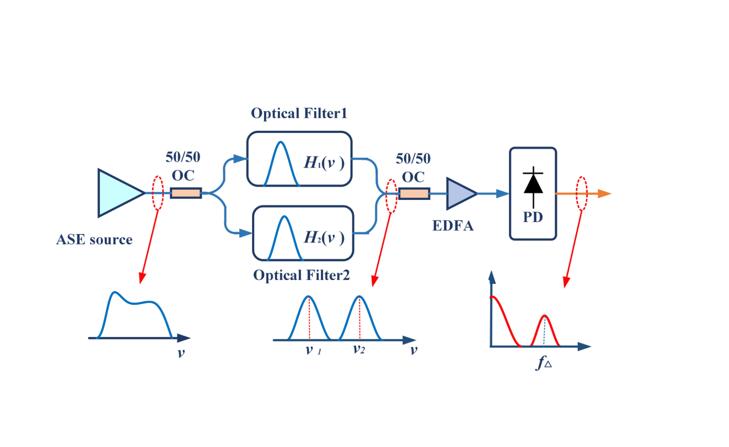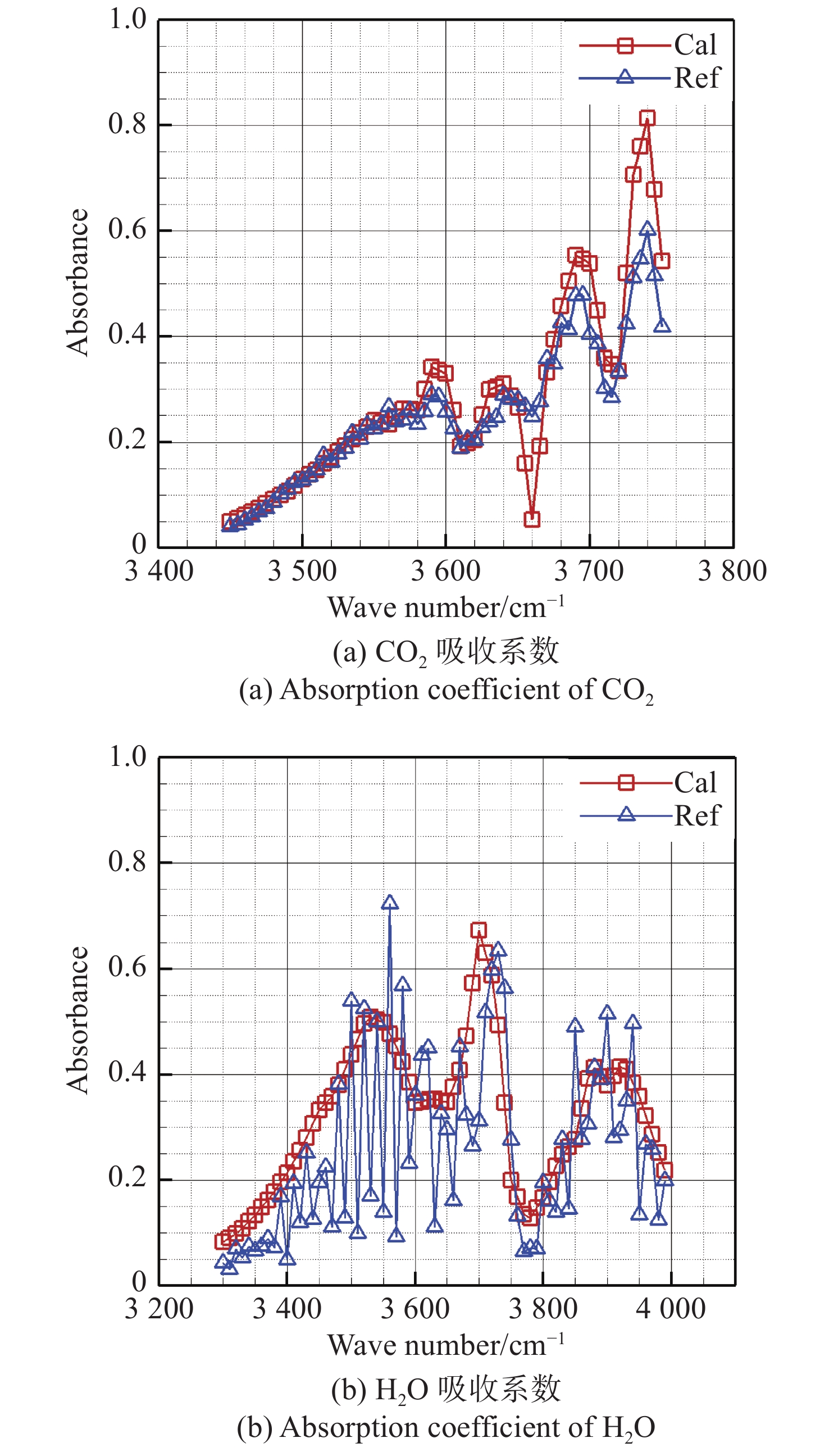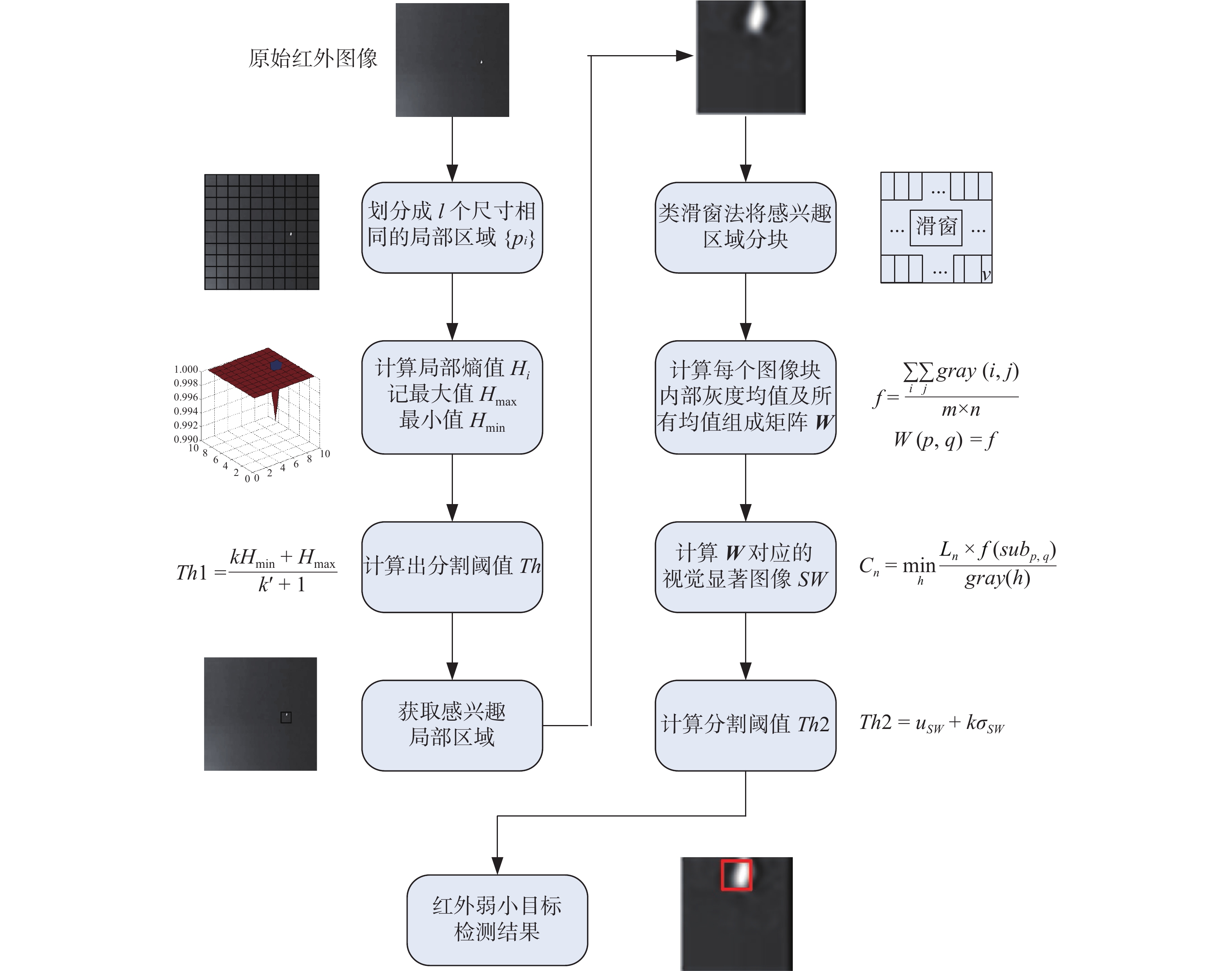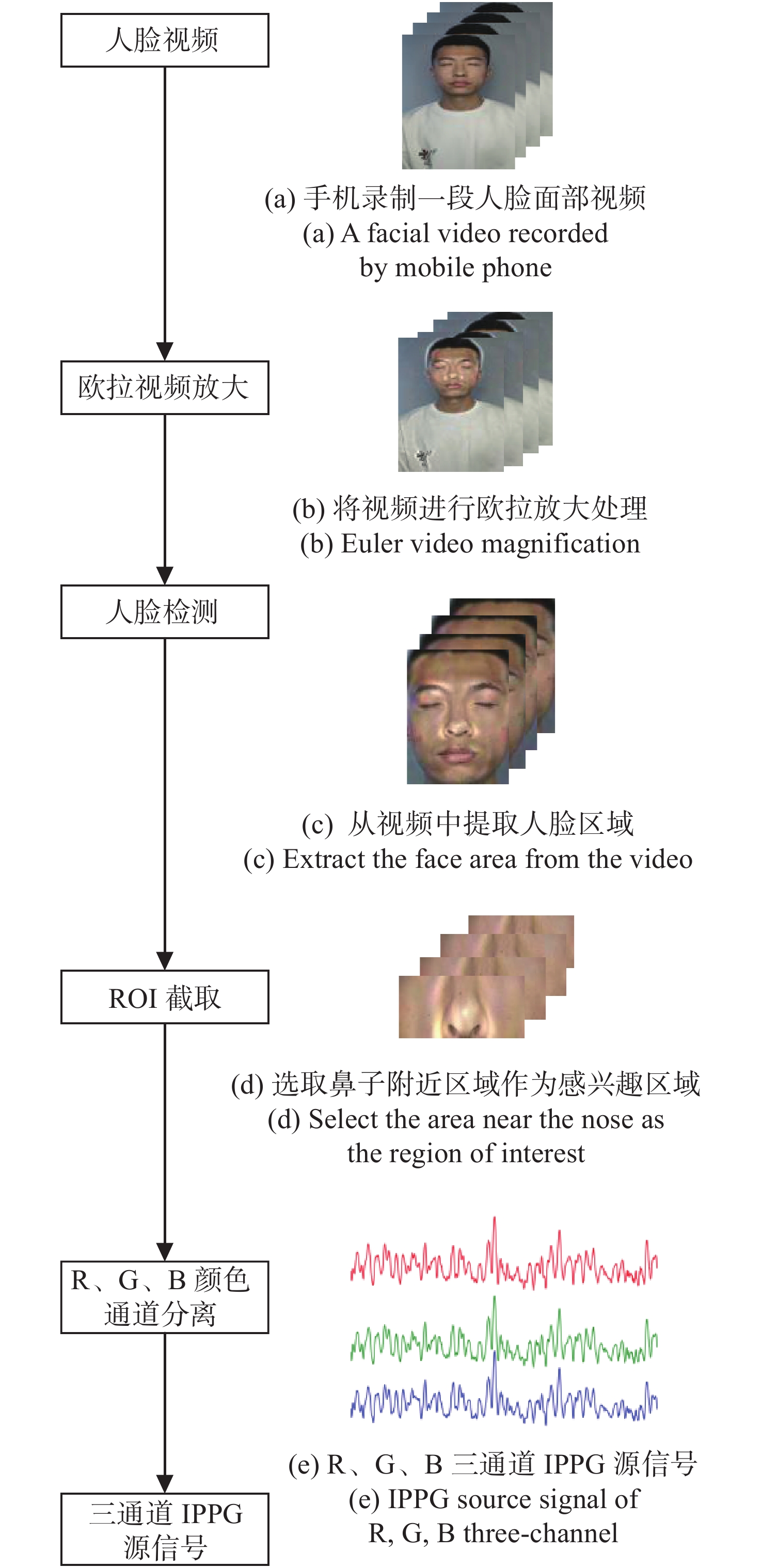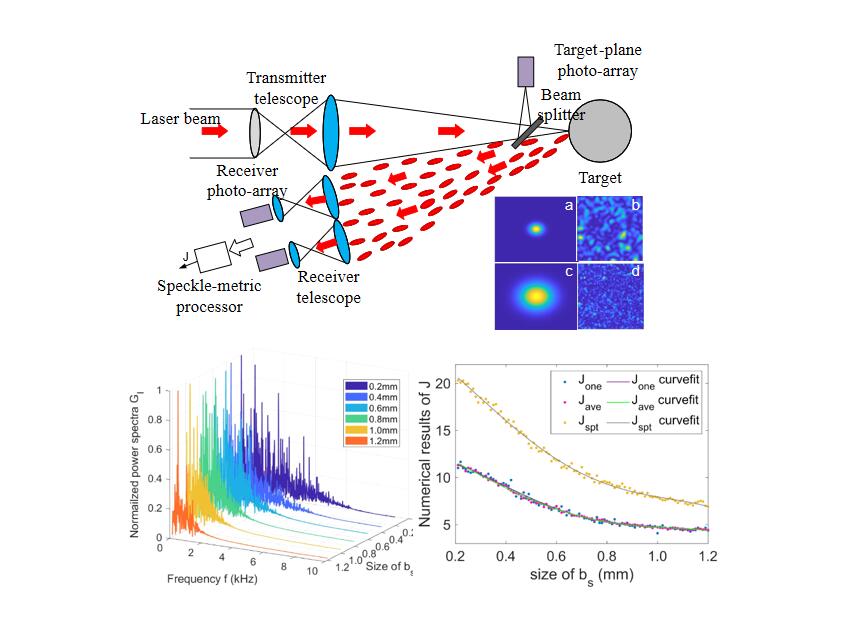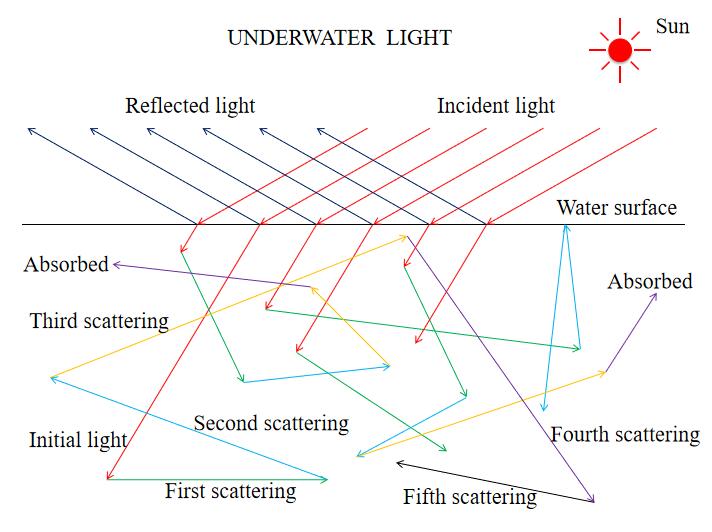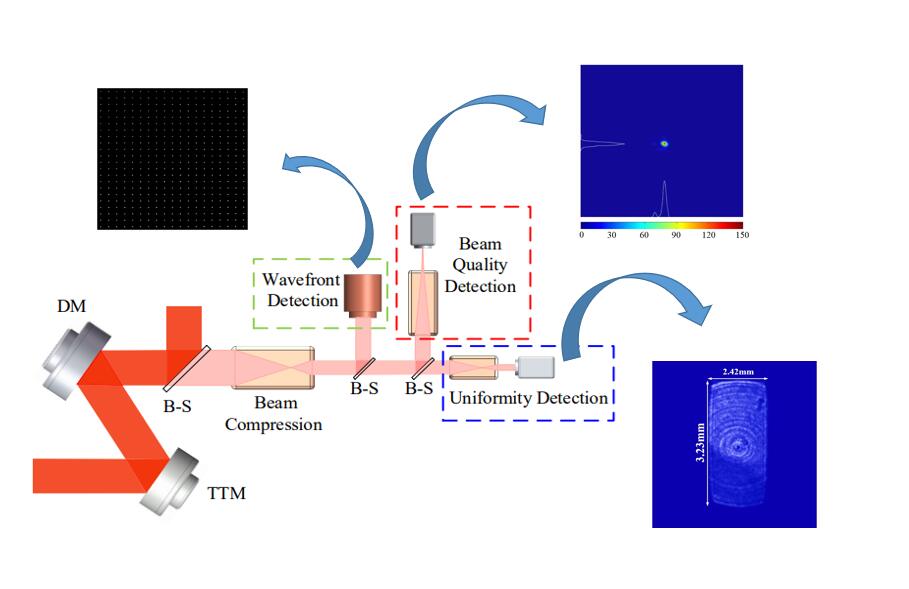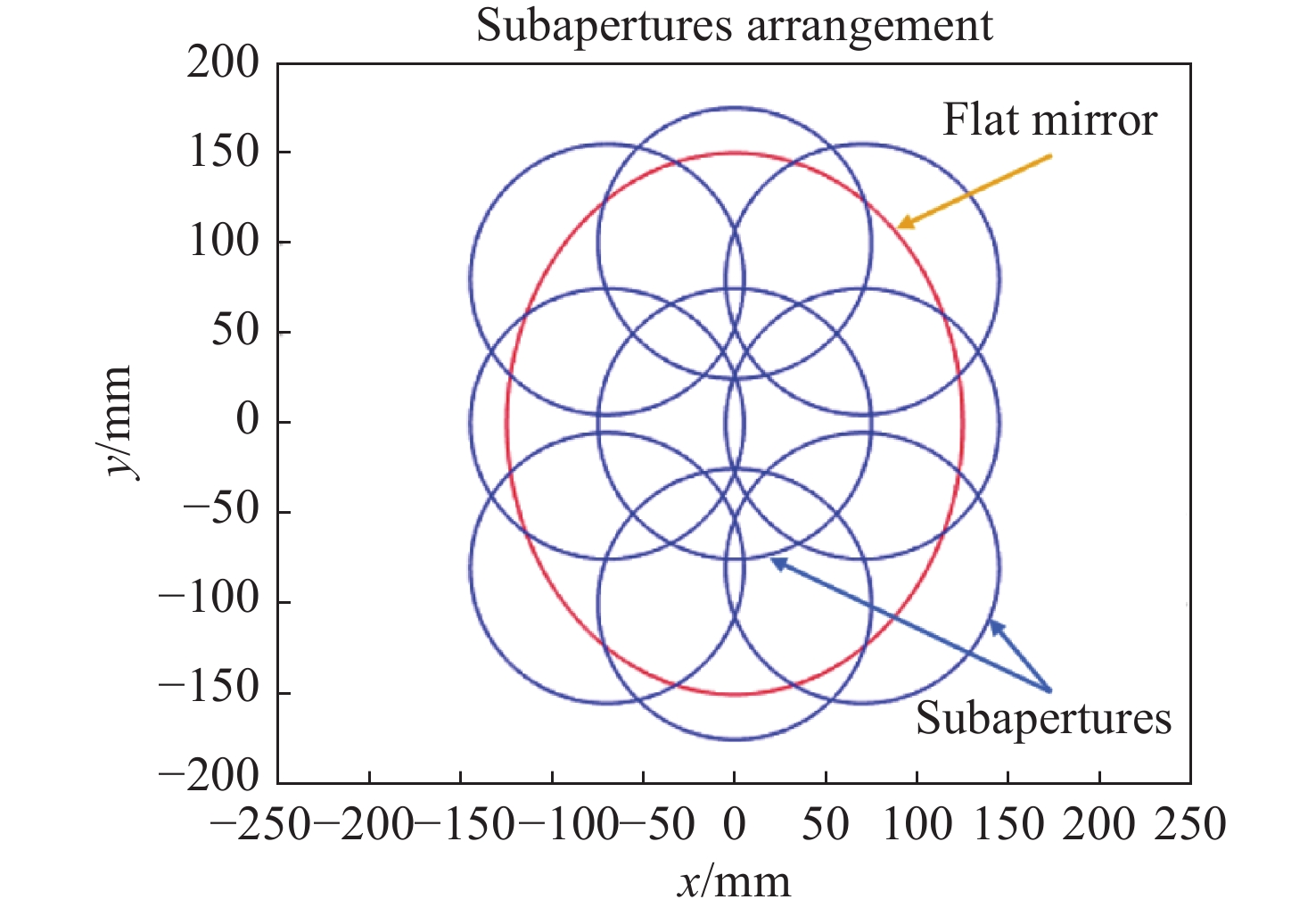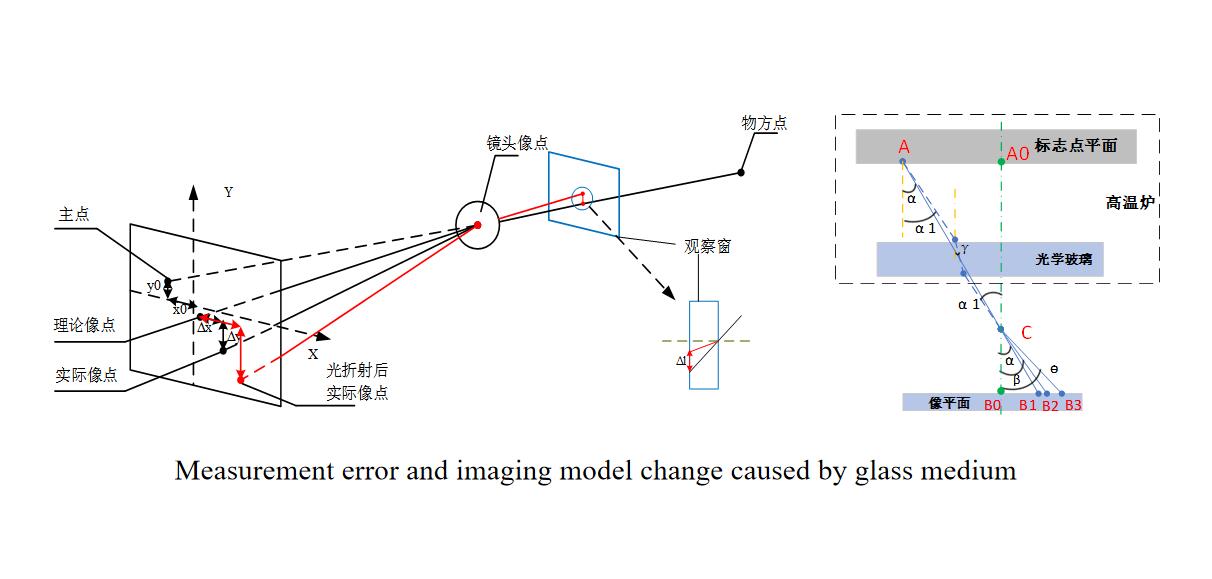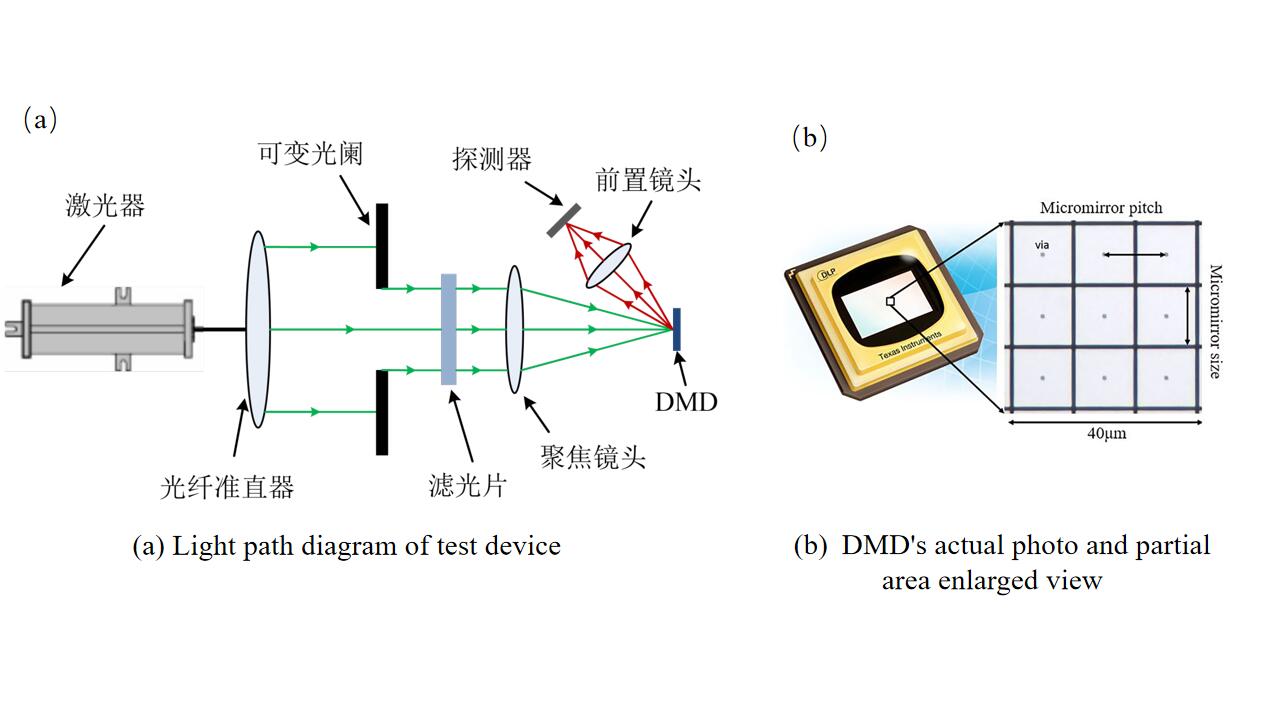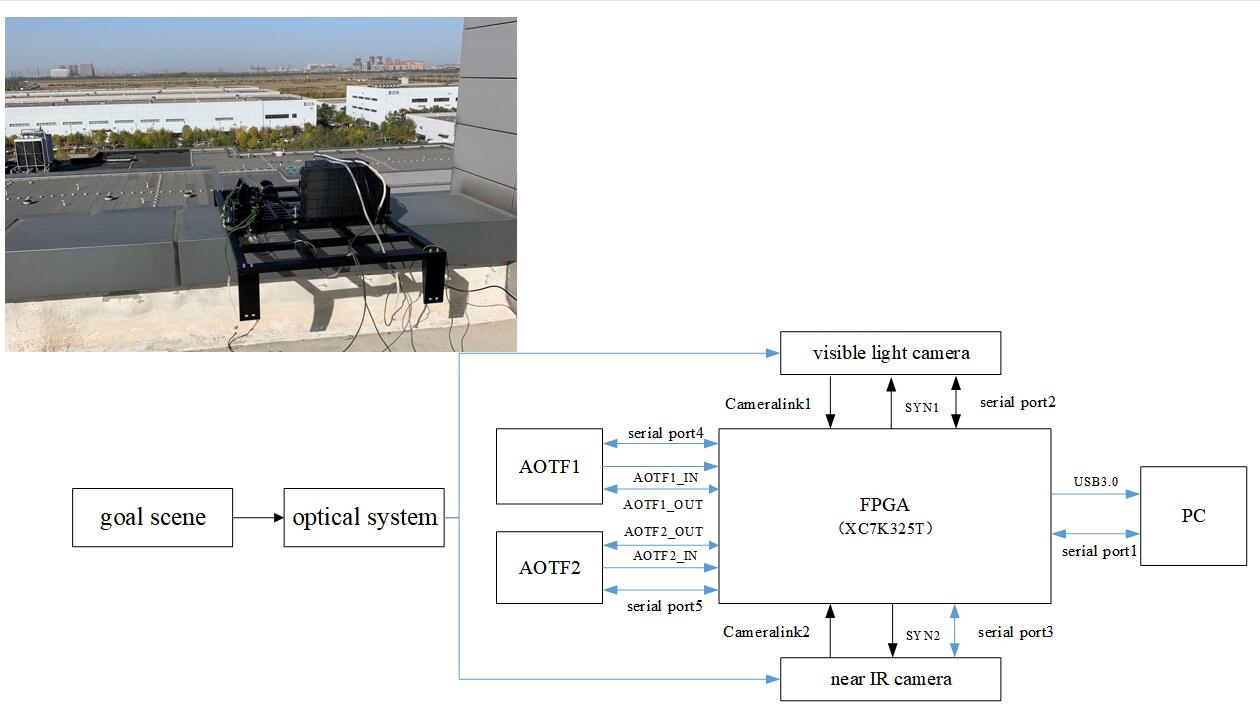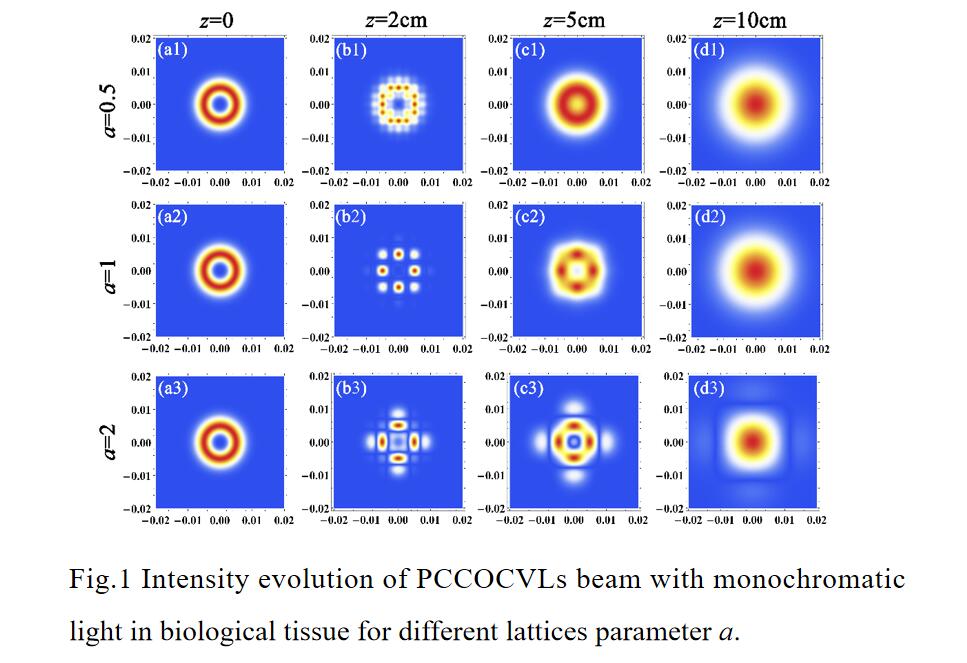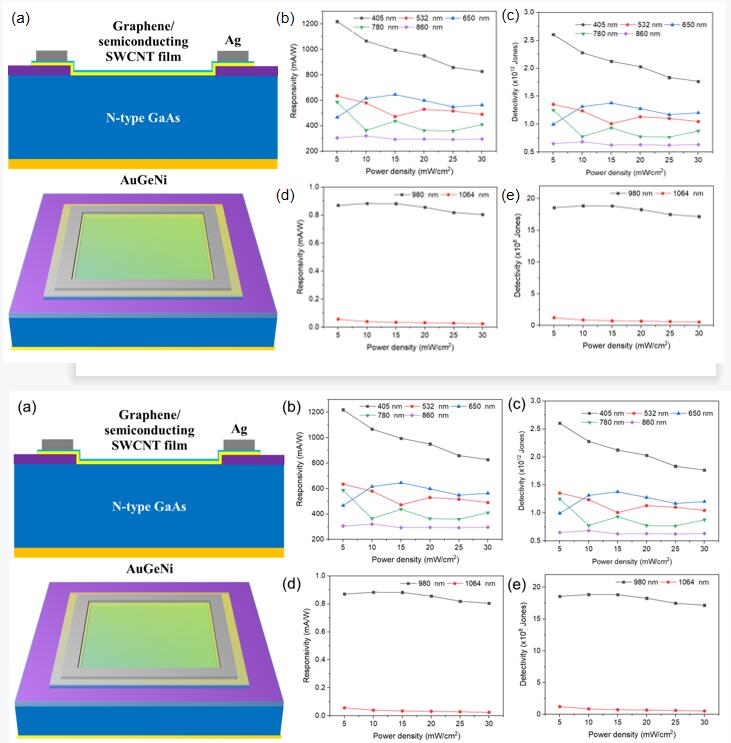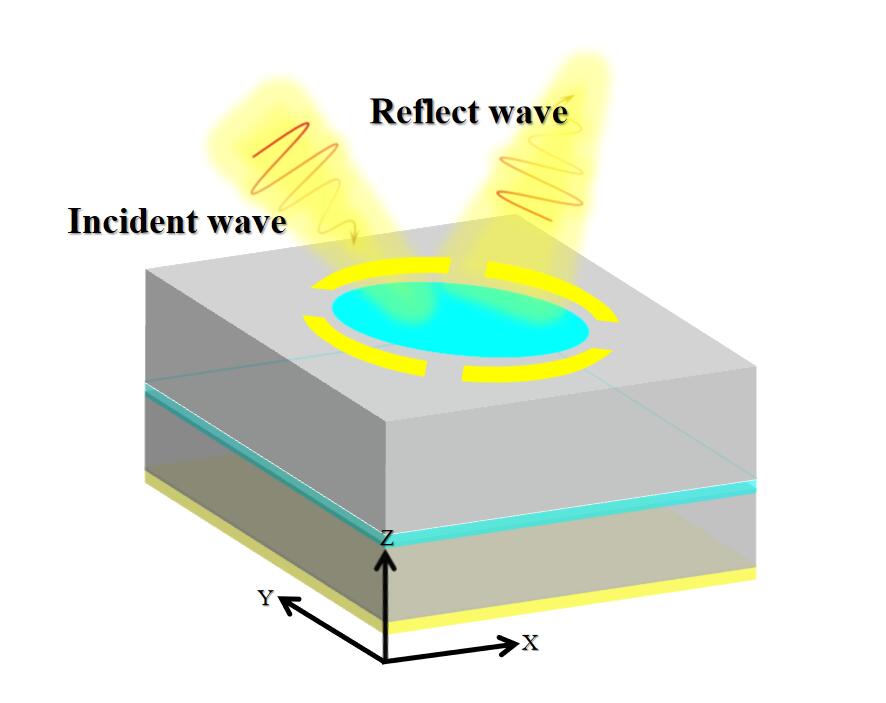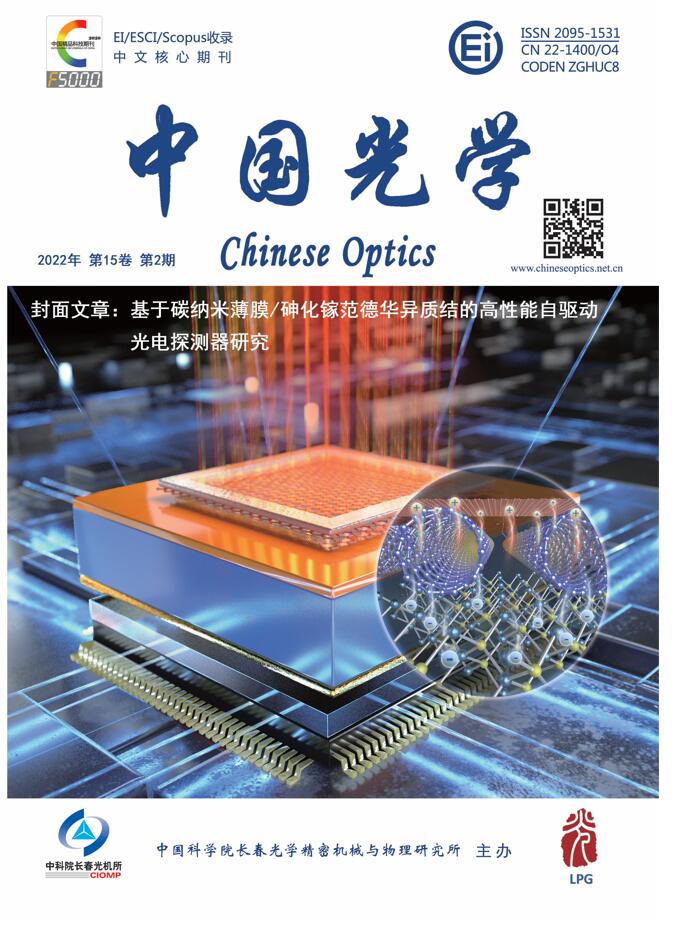2022 Vol. 15, No. 2
2022, 15(2): 161-186.
doi: 10.37188/CO.2021-0143
cstr: 32171.14.CO.2021-0143
Abstract:
Optical Systems using aspheric components (especially for free-form ones) have remarkable advantages over traditional spherical systems in that they can satisfy complicated requirements with simple optical-mechanical structures relying on abundant optional design parameters. Surface testing is an essential process for ensuring accuracy in manufacturing. Therefore, plenty of testing methods have been developed to meet varying testing demands of different types of surfaces at different stages in manufacturing. This paper summarizes the history of aspheric surface testing technology, classifies available techniques by whether they use interferometry, then introduces corresponding technical indexes, applicable conditions, research progress and applications. This paper highlights the high-precision interferometric methods, basic principles, optical layout and testing performances of every measurement method classified into Null and Non-null testing. The pros and cons of each method are compared, relative algorithms are introduced and precise adjustment methods are discussed.
Optical Systems using aspheric components (especially for free-form ones) have remarkable advantages over traditional spherical systems in that they can satisfy complicated requirements with simple optical-mechanical structures relying on abundant optional design parameters. Surface testing is an essential process for ensuring accuracy in manufacturing. Therefore, plenty of testing methods have been developed to meet varying testing demands of different types of surfaces at different stages in manufacturing. This paper summarizes the history of aspheric surface testing technology, classifies available techniques by whether they use interferometry, then introduces corresponding technical indexes, applicable conditions, research progress and applications. This paper highlights the high-precision interferometric methods, basic principles, optical layout and testing performances of every measurement method classified into Null and Non-null testing. The pros and cons of each method are compared, relative algorithms are introduced and precise adjustment methods are discussed.
2022, 15(2): 187-209.
doi: 10.37188/CO.EN.2021-0012
cstr: 32171.14.CO.EN.2021-0012
Abstract:
Oxide Vertical Cavity Surface Emitting Lasers(VCSELs) are widely used in high-speed optical communications. The reliability of VCSELs is a very important index that requires a high lifetime and low failure rate in the application process. Understanding the root causes and mechanisms of VCSEL failure is necessary and helpful to improve device reliability. In this paper, we summarize and analyze the most common failure modes, causes and mechanisms observed in oxide VCSELs from the perspective of design, manufacturing and application, then apply some appropriate measures and suggestions to prevent or improve them. Moreover, the three dominating factors leading to the failure of VCSELs including oxide layer stress, Electronic Static Discharge (ESD) and humidity corrosion are introduced in more detail. At last, we simply introduce the VCSEL failure cases encountered in the actual accelerated aging verification process. This article can be used as a good VCSEL failure analysis library for chip development and production researchers.
Oxide Vertical Cavity Surface Emitting Lasers(VCSELs) are widely used in high-speed optical communications. The reliability of VCSELs is a very important index that requires a high lifetime and low failure rate in the application process. Understanding the root causes and mechanisms of VCSEL failure is necessary and helpful to improve device reliability. In this paper, we summarize and analyze the most common failure modes, causes and mechanisms observed in oxide VCSELs from the perspective of design, manufacturing and application, then apply some appropriate measures and suggestions to prevent or improve them. Moreover, the three dominating factors leading to the failure of VCSELs including oxide layer stress, Electronic Static Discharge (ESD) and humidity corrosion are introduced in more detail. At last, we simply introduce the VCSEL failure cases encountered in the actual accelerated aging verification process. This article can be used as a good VCSEL failure analysis library for chip development and production researchers.
2022, 15(2): 210-223.
doi: 10.37188/CO.2021-0176
cstr: 32171.14.CO.2021-0176
Abstract:
With the development of the computer vision technology, research on recording and modeling the real world accurately and efficiently has become a key issue. Due to the limitation of hardware, the resolution of a point cloud is usually low, which cannot meet the applications. Therefore, it is necessary to study the super-resolution technology of point clouds. In this paper, we sort out the significance, progress, and evaluation methods of 3D point cloud super-resolution technology, introduce the classical super-resolution algorithm and the super-resolution algorithm based on machine learning, summarize the characteristics of the current methods, and point out the main problems and challenges in current point cloud data super-resolution technology. Finally, the future direction in point cloud super-resolution technology is proposed.
With the development of the computer vision technology, research on recording and modeling the real world accurately and efficiently has become a key issue. Due to the limitation of hardware, the resolution of a point cloud is usually low, which cannot meet the applications. Therefore, it is necessary to study the super-resolution technology of point clouds. In this paper, we sort out the significance, progress, and evaluation methods of 3D point cloud super-resolution technology, introduce the classical super-resolution algorithm and the super-resolution algorithm based on machine learning, summarize the characteristics of the current methods, and point out the main problems and challenges in current point cloud data super-resolution technology. Finally, the future direction in point cloud super-resolution technology is proposed.
2022, 15(2): 224-232.
doi: 10.37188/CO.2021-0142
cstr: 32171.14.CO.2021-0142
Abstract:
In this paper, we introduce a prefabricabed Ag@SiO2 nanostructure directly into tellurite luminescence glass composed of 70TeO2-25ZnO-5La2O3-0.5Er2O3. We find that the maximum enhancement of visible and infrared excitation spectra intensity of (A) Ag (1.6×10−6 mol/L)@SiO2(40 nm) @Er3+ (0.5%): tellurite glass relative to (B) Er3+ (0.5%): tellurite glass is about 149.0% and 161.5%, respectively. Their maximum enhancement of visible and infrared luminescence spectra intensity is 155.2% and 151.6%, respectively. We also find that sample (A) has a larger lifespan compared to sample (B). Because the surface plasmon absorption peak of Ag@SiO2 is located at 546.0 nm, it completely resonates with the luminescence peak of erbium ions which are also at 546.0 nm. Therefore, the resonance enhancement action of Ag@SiO2 on the luminescence of erbium-doped tellurite luminescence glass is significant. Thanks to the advantages of the step-by-step realization of the silver nano core-shell structure and the production of glass, it can successfully and smoothly control the size of Ag@SiO2. It also has the advantage of strong operability in the manufacturing process of Ag@SiO2@Er: telluride luminescence glass. Its costs are also minor. Moreover, it can not only ensure that the silver is not oxidized, but it can also successfully control the distance between the rare earth ion luminescence center and the silver surface plasma. It can also successfully reduce the back energy transfer, which allows the silver surface plasma to more effectively enhance the intensity of photo-luminescence.
In this paper, we introduce a prefabricabed Ag@SiO2 nanostructure directly into tellurite luminescence glass composed of 70TeO2-25ZnO-5La2O3-0.5Er2O3. We find that the maximum enhancement of visible and infrared excitation spectra intensity of (A) Ag (1.6×10−6 mol/L)@SiO2(40 nm) @Er3+ (0.5%): tellurite glass relative to (B) Er3+ (0.5%): tellurite glass is about 149.0% and 161.5%, respectively. Their maximum enhancement of visible and infrared luminescence spectra intensity is 155.2% and 151.6%, respectively. We also find that sample (A) has a larger lifespan compared to sample (B). Because the surface plasmon absorption peak of Ag@SiO2 is located at 546.0 nm, it completely resonates with the luminescence peak of erbium ions which are also at 546.0 nm. Therefore, the resonance enhancement action of Ag@SiO2 on the luminescence of erbium-doped tellurite luminescence glass is significant. Thanks to the advantages of the step-by-step realization of the silver nano core-shell structure and the production of glass, it can successfully and smoothly control the size of Ag@SiO2. It also has the advantage of strong operability in the manufacturing process of Ag@SiO2@Er: telluride luminescence glass. Its costs are also minor. Moreover, it can not only ensure that the silver is not oxidized, but it can also successfully control the distance between the rare earth ion luminescence center and the silver surface plasma. It can also successfully reduce the back energy transfer, which allows the silver surface plasma to more effectively enhance the intensity of photo-luminescence.
2022, 15(2): 233-241.
doi: 10.37188/CO.2021-0205
cstr: 32171.14.CO.2021-0205
Abstract:
In order to develop an excellent Au nanostars therapeutic agent for photothermal therapy and optical coherence tomography, we research the preparation of gold nanostars, photothermal properties, photothermal therapy and applications in optical coherence tomography. By adopting the tip structure to enhance the local surface plasmon resonance properties of gold nanomaterials, the multi-branched Au nanostars is prepared by seed mediated method. The multi-tip structure enables the Au nanostars to have obvious photothermal effect, then its effect as a therapeutic agent for photothermal therapy and contrast agent for optical coherence tomography is explored. The experimental results showed that compared with Au nanoparticles, the multi-branched Au nanostars had a higher photothermal conversion efficiency of 42%, and has good biocompatibility. At the concentration of 100 μg/mL, the survival rate of human breast cancer cells is 82%. Human breast cancer cells are effectively killed by laser irradiation at the concentration of 100 μg/mL, and the survival rate is significantly reduced to 37%. At the same time, Au nanostars also has better optical coherence tomography imaging effect, significantly improving the signal intensity and imaging depth. Au nanostars is a promising multifunctional therapeutic agent with both efficient photothermal therapy and excellent optical coherence tomography imaging capability.
In order to develop an excellent Au nanostars therapeutic agent for photothermal therapy and optical coherence tomography, we research the preparation of gold nanostars, photothermal properties, photothermal therapy and applications in optical coherence tomography. By adopting the tip structure to enhance the local surface plasmon resonance properties of gold nanomaterials, the multi-branched Au nanostars is prepared by seed mediated method. The multi-tip structure enables the Au nanostars to have obvious photothermal effect, then its effect as a therapeutic agent for photothermal therapy and contrast agent for optical coherence tomography is explored. The experimental results showed that compared with Au nanoparticles, the multi-branched Au nanostars had a higher photothermal conversion efficiency of 42%, and has good biocompatibility. At the concentration of 100 μg/mL, the survival rate of human breast cancer cells is 82%. Human breast cancer cells are effectively killed by laser irradiation at the concentration of 100 μg/mL, and the survival rate is significantly reduced to 37%. At the same time, Au nanostars also has better optical coherence tomography imaging effect, significantly improving the signal intensity and imaging depth. Au nanostars is a promising multifunctional therapeutic agent with both efficient photothermal therapy and excellent optical coherence tomography imaging capability.
2022, 15(2): 242-250.
doi: 10.37188/CO.2021-0160
cstr: 32171.14.CO.2021-0160
Abstract:
With the development of optoelectronic countermeasures and ultrashort pulse laser technology, the study of the interaction between ultrashort pulse laser and monocrystalline silicon has a very important theoretical and practical significance. In order to further clarify the damage mechanism of 532 nm picosecond pulsed laser on monocrystalline silicon, we have conducted an experimental study to measure the damage threshold, clarify the damage mechanism, and discuss the pulse accumulation effect at low flux. Firstly, using a laser with a wavelength of 532 nm, a pulse width of 30 ps and a metallurgical microscope based on the 1-on-1 laser damage test method, the zero damage probability threshold is determined to be 0.52 J/cm2. Secondly, the damage effect of a picosecond laser irradiated on monocrystalline silicon was studied under different laser fluxes, and it was found that the damage of 532 nm picosecond laser to monocrystalline silicon is manifested as heated-effect damage and plasma impact damage. The increase in energy density can be divided into three stages according to the main damage mechanism: thermal effect (0.52~3 J/cm2), thermal ablation (3~50 J/cm2) and plasma effect (>50 J/cm2), and the damaged areas are corresponded to different growth laws with the laser energy density, respectively. Finally, an experiment for the multi-pulse cumulative effect was carried out at a low laser flux and it was found that at a laser energy density of 0.52 J/cm2, the surface was irradiated continuously for 16 shots. The formation of a heat-affected zone confirms that the cumulative effect of multiple pulses can lower the laser damage threshold on monocrystalline silicon.
With the development of optoelectronic countermeasures and ultrashort pulse laser technology, the study of the interaction between ultrashort pulse laser and monocrystalline silicon has a very important theoretical and practical significance. In order to further clarify the damage mechanism of 532 nm picosecond pulsed laser on monocrystalline silicon, we have conducted an experimental study to measure the damage threshold, clarify the damage mechanism, and discuss the pulse accumulation effect at low flux. Firstly, using a laser with a wavelength of 532 nm, a pulse width of 30 ps and a metallurgical microscope based on the 1-on-1 laser damage test method, the zero damage probability threshold is determined to be 0.52 J/cm2. Secondly, the damage effect of a picosecond laser irradiated on monocrystalline silicon was studied under different laser fluxes, and it was found that the damage of 532 nm picosecond laser to monocrystalline silicon is manifested as heated-effect damage and plasma impact damage. The increase in energy density can be divided into three stages according to the main damage mechanism: thermal effect (0.52~3 J/cm2), thermal ablation (3~50 J/cm2) and plasma effect (>50 J/cm2), and the damaged areas are corresponded to different growth laws with the laser energy density, respectively. Finally, an experiment for the multi-pulse cumulative effect was carried out at a low laser flux and it was found that at a laser energy density of 0.52 J/cm2, the surface was irradiated continuously for 16 shots. The formation of a heat-affected zone confirms that the cumulative effect of multiple pulses can lower the laser damage threshold on monocrystalline silicon.
2022, 15(2): 251-258.
doi: 10.37188/CO.2021-0158
cstr: 32171.14.CO.2021-0158
Abstract:
The Excess Noise Ratio (ENR) of traditional noise sources is usually less than 20 dB due to the limitation of the working frequency and the power of electronic devices. To solve the problem, we propose a technology to generate a millimeter-wave noise source with a high ENR by two incoherent light beams beating. First, two optical filters are used to filter and shape the broadband amplified spontaneous emission light source. Then, the two obtained beams of amplified spontaneous radiation light with different frequencies are coupled to the photodetector for the beat frequency, which can generate electrical noise signals. A theoretical analysis predicts that a noise source with an ENR larger than 50 dB can be obtained by adjusting the optical spectral, linewidth and optical power of the two incoherent light beams filtered from an amplified spontaneous emission source under the current level of photodetector responsivity. A proof-of-concept experiment achieved a millimeter-wave noise source with an ENR higher than 50 dB. This method could also generate millimeter-wave and even terahertz-wave noise with a high ENR if a higher-speed photodetector was used.
The Excess Noise Ratio (ENR) of traditional noise sources is usually less than 20 dB due to the limitation of the working frequency and the power of electronic devices. To solve the problem, we propose a technology to generate a millimeter-wave noise source with a high ENR by two incoherent light beams beating. First, two optical filters are used to filter and shape the broadband amplified spontaneous emission light source. Then, the two obtained beams of amplified spontaneous radiation light with different frequencies are coupled to the photodetector for the beat frequency, which can generate electrical noise signals. A theoretical analysis predicts that a noise source with an ENR larger than 50 dB can be obtained by adjusting the optical spectral, linewidth and optical power of the two incoherent light beams filtered from an amplified spontaneous emission source under the current level of photodetector responsivity. A proof-of-concept experiment achieved a millimeter-wave noise source with an ENR higher than 50 dB. This method could also generate millimeter-wave and even terahertz-wave noise with a high ENR if a higher-speed photodetector was used.
2022, 15(2): 259-266.
doi: 10.37188/CO.2021-0232
cstr: 32171.14.CO.2021-0232
Abstract:
When a hypersonic vehicle maneuvers at a high angle of attack, the jet generated by its off-orbit engine interferes strongly with the high-speed thin atmospheric flow, and the flow field is complicated, and the infrared radiation generated by the flow field is also a landmark event in space-based infrared system detection. In this paper, aiming at interference situation of the jet flow of hypersonic flight vehicle engine and thin flow, Navier-Stokes equations are numerically solved to simulate the interference flow field, and the infrared radiation characteristics of gas are obtained by the line-by-line integration method. Combining with the backward Monte Carlo method, the infrared radiation characteristic of exhaust plume are obtained when the aircraft flight′s altitude is 94 kilometers, with no wind, different incoming flow attack angles and different velocities are considered, and the observability of low orbit satellites is evaluated. The simulation results show that for a given observation position, the intensity of infrared radiation in each band is low when there is no wind, and the maximum value is 10−9 W/m2. Under the influence of incoming flow attack angles, the infrared signal intensity of the flow field increases significantly with greater attack angle and velocities and the maximum value reaches 10−6 W/m2. The atmospheric attenuation effect has great influence on the observability of different observation positions. The results can provide reference for infrared warning and anti-missile of hypersonic vehicle.
When a hypersonic vehicle maneuvers at a high angle of attack, the jet generated by its off-orbit engine interferes strongly with the high-speed thin atmospheric flow, and the flow field is complicated, and the infrared radiation generated by the flow field is also a landmark event in space-based infrared system detection. In this paper, aiming at interference situation of the jet flow of hypersonic flight vehicle engine and thin flow, Navier-Stokes equations are numerically solved to simulate the interference flow field, and the infrared radiation characteristics of gas are obtained by the line-by-line integration method. Combining with the backward Monte Carlo method, the infrared radiation characteristic of exhaust plume are obtained when the aircraft flight′s altitude is 94 kilometers, with no wind, different incoming flow attack angles and different velocities are considered, and the observability of low orbit satellites is evaluated. The simulation results show that for a given observation position, the intensity of infrared radiation in each band is low when there is no wind, and the maximum value is 10−9 W/m2. Under the influence of incoming flow attack angles, the infrared signal intensity of the flow field increases significantly with greater attack angle and velocities and the maximum value reaches 10−6 W/m2. The atmospheric attenuation effect has great influence on the observability of different observation positions. The results can provide reference for infrared warning and anti-missile of hypersonic vehicle.
2022, 15(2): 267-275.
doi: 10.37188/CO.2021-0170
cstr: 32171.14.CO.2021-0170
Abstract:
To improve the high false-alarm rate and poor real-time capability in detecting infrared small dim targets, a novel algorithm based on visual saliency and local entropy is proposed in this paper. This method solves the problem from coarse to fine detecting of small targets. First, a local entropy method is used to obtain the region of interest. Then, an improved visual saliency method is used to calculate local contrast. Finally, a threshold segmentation method is used to extract dim infrared small targets. The method is verified using a contrast test with TOPHAT and LCM, and the results show that the performance of this method precedes the TOPHAT algorithm and LCM algorithm. The false alarm rate by this method decreases to 62.5% and 33.3% compared with the other two algorithms, and the time cost decrease to 38.6% of that of LCM. The method can achieve accurate detection of infrared dim and small targets in a complicated environment, solving the high false alarm rate and poor real-time capability issues to some extent.
To improve the high false-alarm rate and poor real-time capability in detecting infrared small dim targets, a novel algorithm based on visual saliency and local entropy is proposed in this paper. This method solves the problem from coarse to fine detecting of small targets. First, a local entropy method is used to obtain the region of interest. Then, an improved visual saliency method is used to calculate local contrast. Finally, a threshold segmentation method is used to extract dim infrared small targets. The method is verified using a contrast test with TOPHAT and LCM, and the results show that the performance of this method precedes the TOPHAT algorithm and LCM algorithm. The false alarm rate by this method decreases to 62.5% and 33.3% compared with the other two algorithms, and the time cost decrease to 38.6% of that of LCM. The method can achieve accurate detection of infrared dim and small targets in a complicated environment, solving the high false alarm rate and poor real-time capability issues to some extent.
2022, 15(2): 276-285.
doi: 10.37188/CO.2021-0157
cstr: 32171.14.CO.2021-0157
Abstract:
Non-contact detection of various physiological parameters has attract great attention. In this paper, a method of estimating physiological parameters based on imaging photoplethysmography from videos of people’s faces recorded by mobile phone is proposed. First, a "wavelet transform-principal component analysis-blind source separation" algorithm is proposed to extract the video’s RGB three-channel pulse wave signal with a high signal-to-noise ratio. Then, the green channel signal is processed separately in the frequency and the time domains to estimate heart and respiratory rates. The pulse wave signals of the red and blue channels are processed, and combined with the oxygen saturation detected by an oximeter to perform data fitting, the best linear equation for estimating the oxygen saturation value from the facial video is found. Finally, the error of the estimation results of various physiological parameters under natural light is compared, and the estimation results of each parameter under three lighting environments are analyzed. The results show that under the three lighting environments, the average error of heart rate detection is 0.5512 time/min, the average error of respiration rate is −0.6321 time/min , and the average error of oxygen saturation is −0.2743%. In summary, the non-contact physiological parameter estimation method proposed in this paper is highly accurate, universally applicable and stable. Its estimation results are highly consistent with the measurement result of standard instruments, which meets the needs of daily physiological parameter measurement.
Non-contact detection of various physiological parameters has attract great attention. In this paper, a method of estimating physiological parameters based on imaging photoplethysmography from videos of people’s faces recorded by mobile phone is proposed. First, a "wavelet transform-principal component analysis-blind source separation" algorithm is proposed to extract the video’s RGB three-channel pulse wave signal with a high signal-to-noise ratio. Then, the green channel signal is processed separately in the frequency and the time domains to estimate heart and respiratory rates. The pulse wave signals of the red and blue channels are processed, and combined with the oxygen saturation detected by an oximeter to perform data fitting, the best linear equation for estimating the oxygen saturation value from the facial video is found. Finally, the error of the estimation results of various physiological parameters under natural light is compared, and the estimation results of each parameter under three lighting environments are analyzed. The results show that under the three lighting environments, the average error of heart rate detection is 0.5512 time/min, the average error of respiration rate is −0.6321 time/min , and the average error of oxygen saturation is −0.2743%. In summary, the non-contact physiological parameter estimation method proposed in this paper is highly accurate, universally applicable and stable. Its estimation results are highly consistent with the measurement result of standard instruments, which meets the needs of daily physiological parameter measurement.
2022, 15(2): 286-296.
doi: 10.37188/CO.2021-0152
cstr: 32171.14.CO.2021-0152
Abstract:
To improve the accuracy and efficiency of the dynamic speckle metric for non-destructively detecting far-field target hit-spot intensity in a Target-In-the-Loop (TIL) system, a multi-channel cooperative detection system for acquiring speckle signals is established. The theory of dynamic speckles, the simulation model of this system and the spatial-temporal spectral fusion characteristics are also investigated. As a first step, the power spectrum is obtained by filtering, auto-correlating and Fourier transforming the intensity fluctuations of dynamic speckle detected by the point detector. Then, the feasibility of speckle-metric, obtained by multiplying the spectrum with weights, is explored to monitor the target-focused spot. As a second step, the approach of splicing the temporal signals obtained from different spatial locations on the receiving plane is proposed. Moreover, the prerequisites of this approach are listed. Finally, the effectiveness of the proposed speckle metric obtained by fusing the spectrum is verified through simulations and experiments. The results show that the speckle metric decreases with an increase in the hit-spot size, and the four-channel space-averaging metric can improve the accuracy by a factor of 2 when each group of signals is uncorrelated. Moreover, the metric obtained by spatial-temporal fusion spectrum not only guarantees accuracy but also quadruples the system’s bandwidth. Therefore, the multi-channel cooperative acquisition of the speckle metric can monitor the hit-spot change of far-field moving targets more rapidly than current solutions.
To improve the accuracy and efficiency of the dynamic speckle metric for non-destructively detecting far-field target hit-spot intensity in a Target-In-the-Loop (TIL) system, a multi-channel cooperative detection system for acquiring speckle signals is established. The theory of dynamic speckles, the simulation model of this system and the spatial-temporal spectral fusion characteristics are also investigated. As a first step, the power spectrum is obtained by filtering, auto-correlating and Fourier transforming the intensity fluctuations of dynamic speckle detected by the point detector. Then, the feasibility of speckle-metric, obtained by multiplying the spectrum with weights, is explored to monitor the target-focused spot. As a second step, the approach of splicing the temporal signals obtained from different spatial locations on the receiving plane is proposed. Moreover, the prerequisites of this approach are listed. Finally, the effectiveness of the proposed speckle metric obtained by fusing the spectrum is verified through simulations and experiments. The results show that the speckle metric decreases with an increase in the hit-spot size, and the four-channel space-averaging metric can improve the accuracy by a factor of 2 when each group of signals is uncorrelated. Moreover, the metric obtained by spatial-temporal fusion spectrum not only guarantees accuracy but also quadruples the system’s bandwidth. Therefore, the multi-channel cooperative acquisition of the speckle metric can monitor the hit-spot change of far-field moving targets more rapidly than current solutions.
2022, 15(2): 297-305.
doi: 10.37188/CO.2021-0162
cstr: 32171.14.CO.2021-0162
Abstract:
The scattering of light by water is an important factor in the deterioration of underwater image quality. In order to quantitatively analyze the influence of water scattering under the irradiation of a specific light source, the scattering model of underwater light transmission is established, and the Fredholm integral equation for solving the distribution of underwater light field is derived. Under conditions where the light energy underwater decays exponentially with an increase in distance and the volume scattering function of the water is constant, the numerical iterative solution method of the integral equation with boundary conditions is given and the high-precision underwater light field distribution can be obtained. Taking the sun, uniform sky brightness, and underwater and overwater point light sources as examples, the calculation results of their underwater light fields when the water surface is calm are given. This method can be extended to solve the distribution of underwater light fields under arbitrary light source configurations and arbitrary boundary conditions, which lays a foundation for strictly deriving a point spread function and modulation transfer function for water bodies.
The scattering of light by water is an important factor in the deterioration of underwater image quality. In order to quantitatively analyze the influence of water scattering under the irradiation of a specific light source, the scattering model of underwater light transmission is established, and the Fredholm integral equation for solving the distribution of underwater light field is derived. Under conditions where the light energy underwater decays exponentially with an increase in distance and the volume scattering function of the water is constant, the numerical iterative solution method of the integral equation with boundary conditions is given and the high-precision underwater light field distribution can be obtained. Taking the sun, uniform sky brightness, and underwater and overwater point light sources as examples, the calculation results of their underwater light fields when the water surface is calm are given. This method can be extended to solve the distribution of underwater light fields under arbitrary light source configurations and arbitrary boundary conditions, which lays a foundation for strictly deriving a point spread function and modulation transfer function for water bodies.
2022, 15(2): 306-317.
doi: 10.37188/CO.2021-0130
cstr: 32171.14.CO.2021-0130
Abstract:
The adaptive optical correction technology can effectively improve the beam quality of solid slab lasers, but with the increase of laser output power, the output beam aperture and the system volume increase gradually, which make the design of adaptive optical correction system more difficult. Therefore, under the premise of meeting the requirements of conjugate detection in the adaptive optical correction system, it is of certain research significance to optimize the size parameters of the detection system as a whole, and realize the detection of multiple parameters such as wavefront phase and beam quality evaluation. In this paper, we realized the multi-parameter detection of 160 mm×120 mm rectangular beam emitted by slab laser under the condition that the overall size of the system is 350 mm×180 mm×220 mm (length × width × height). According to the technical requirements of large detection apertures, limitation of tube length and long exit pupil distance, firstly, the dual-Gaussian initial structure was used to eliminate the aberration. Combined with the aspheric surface technology, the design scheme of splitting detection after high-ratio beam compression was adopted to realize the simultaneous detection and evaluation of multiple parameters. Secondly, the initial parameters of the system were determined based on the principles of telephoto imaging and conjugate imaging. Thirdly, the simulation model of the detection system was established to analyze the imaging quality and the tolerance of the system, which were implemented to provide the basis for the construction of the experiment. Finally, the experiments were carried out to verify the design results. Results indicate that the conjugate wavefront detection, light intensity uniformity detection and beam quality evaluation of 160 mm × 120 mm rectangular beam can be realized under the conditions of the object-image conjugation and size constraint conditions. In the experiment, the β factor of the measured beam is 1.24 times the diffraction limit, and the uniformity is 73.8 %, which meet the technical requirements.
The adaptive optical correction technology can effectively improve the beam quality of solid slab lasers, but with the increase of laser output power, the output beam aperture and the system volume increase gradually, which make the design of adaptive optical correction system more difficult. Therefore, under the premise of meeting the requirements of conjugate detection in the adaptive optical correction system, it is of certain research significance to optimize the size parameters of the detection system as a whole, and realize the detection of multiple parameters such as wavefront phase and beam quality evaluation. In this paper, we realized the multi-parameter detection of 160 mm×120 mm rectangular beam emitted by slab laser under the condition that the overall size of the system is 350 mm×180 mm×220 mm (length × width × height). According to the technical requirements of large detection apertures, limitation of tube length and long exit pupil distance, firstly, the dual-Gaussian initial structure was used to eliminate the aberration. Combined with the aspheric surface technology, the design scheme of splitting detection after high-ratio beam compression was adopted to realize the simultaneous detection and evaluation of multiple parameters. Secondly, the initial parameters of the system were determined based on the principles of telephoto imaging and conjugate imaging. Thirdly, the simulation model of the detection system was established to analyze the imaging quality and the tolerance of the system, which were implemented to provide the basis for the construction of the experiment. Finally, the experiments were carried out to verify the design results. Results indicate that the conjugate wavefront detection, light intensity uniformity detection and beam quality evaluation of 160 mm × 120 mm rectangular beam can be realized under the conditions of the object-image conjugation and size constraint conditions. In the experiment, the β factor of the measured beam is 1.24 times the diffraction limit, and the uniformity is 73.8 %, which meet the technical requirements.
2022, 15(2): 318-326.
doi: 10.37188/CO.2021-0106
cstr: 32171.14.CO.2021-0106
Abstract:
In order to realize the high-precision surface measurement of large-diameter elliptical optical flat mirrors and improve the image quality of large-aperture telescope systems, the absolute measurement algorithm for flat elliptical mirrors is studied in this paper. Firstly, the orthogonal polynomials fitting of an elliptical optical flat mirror is studied. Then, the absolute testing algorithm is studied theoretically. The orthogonal absolute testing algorithm can effectively separate the surface error of the reference mirror from the mirror to be measured, which can realize the high-precision surface reconstruction of the elliptical flat mirror to be measured. To verify the actual testing accuracy of the above method, we carried out an absolute testing simulation and experiment on a 250 mm×300 mm mirror. In the simulation, the possibility that the reference surface error is high was considered. In the experiment, a 250 mm×300 mm elliptical testing area was selected in the Zygo300 mm standard flat surface. The above-mentioned elliptical area was tested by the 150 mm Zygo interferometer, and the surface reconstruction was realized based on the above-mentioned orthogonal absolute testing algorithm. The experimental results show that the surface error separation between the reference mirror and the elliptical mirror can be achieved by using the method described in this paper, and the residual RMS (Root-Mean Square) value of the absolute testing result is 0.29 nm, which proves the feasibility and accuracy of the method described in this paper. The high-precision surface reconstruction of the elliptical flat mirror can be achieved using the above method.
In order to realize the high-precision surface measurement of large-diameter elliptical optical flat mirrors and improve the image quality of large-aperture telescope systems, the absolute measurement algorithm for flat elliptical mirrors is studied in this paper. Firstly, the orthogonal polynomials fitting of an elliptical optical flat mirror is studied. Then, the absolute testing algorithm is studied theoretically. The orthogonal absolute testing algorithm can effectively separate the surface error of the reference mirror from the mirror to be measured, which can realize the high-precision surface reconstruction of the elliptical flat mirror to be measured. To verify the actual testing accuracy of the above method, we carried out an absolute testing simulation and experiment on a 250 mm×300 mm mirror. In the simulation, the possibility that the reference surface error is high was considered. In the experiment, a 250 mm×300 mm elliptical testing area was selected in the Zygo300 mm standard flat surface. The above-mentioned elliptical area was tested by the 150 mm Zygo interferometer, and the surface reconstruction was realized based on the above-mentioned orthogonal absolute testing algorithm. The experimental results show that the surface error separation between the reference mirror and the elliptical mirror can be achieved by using the method described in this paper, and the residual RMS (Root-Mean Square) value of the absolute testing result is 0.29 nm, which proves the feasibility and accuracy of the method described in this paper. The high-precision surface reconstruction of the elliptical flat mirror can be achieved using the above method.
2022, 15(2): 327-338.
doi: 10.37188/CO.2021-0144
cstr: 32171.14.CO.2021-0144
Abstract:
In order to correct the measurement error caused by a glass medium in high-temperature deformation measurement, we take a glass medium as a part of the camera calibration model. Based on photogrammetry technology and digital image correlation, a binocular camera calibration method in a complex environment is proposed and applied to high-temperature deformation measurements. Firstly, aiming at the calibration difficulty caused by the poor image quality in complex environments, the camera imaging model with distortion correction is adopted to achieve binocular camera calibration by bundle adjustment camera calibration method, which improves the success rate and stability of calibration. Secondly, to solve the problem of low calibration accuracy of binocular cameras in complex environments, the influence of lens focal length, ambient light interference and the distance between glass and camera on the calibration results are analyzed, and the optimal calibration parameters are given, so that the calibration reprojection error is reduced from 0.832 pixels to 0.132 pixels. Finally, the measurement error of the calibration method with and without glass is compared by using the measurement environment with a glass medium, which proves that this method can greatly reduce the measurement error. The test results show that this method can effectively reduce the measurement error of a displacement field caused by glass medium in a high-temperature environment. The maximum decrease of measurement error of the displacement field in the X, Y and Z axes is 70.16%, 76.51% and 40.05%, respectively. The method in this paper can achieve high-precision camera calibration in complex environments, and has good calibration stability. It is an effective way of realizing accurate measurement of high-temperature deformation.
In order to correct the measurement error caused by a glass medium in high-temperature deformation measurement, we take a glass medium as a part of the camera calibration model. Based on photogrammetry technology and digital image correlation, a binocular camera calibration method in a complex environment is proposed and applied to high-temperature deformation measurements. Firstly, aiming at the calibration difficulty caused by the poor image quality in complex environments, the camera imaging model with distortion correction is adopted to achieve binocular camera calibration by bundle adjustment camera calibration method, which improves the success rate and stability of calibration. Secondly, to solve the problem of low calibration accuracy of binocular cameras in complex environments, the influence of lens focal length, ambient light interference and the distance between glass and camera on the calibration results are analyzed, and the optimal calibration parameters are given, so that the calibration reprojection error is reduced from 0.832 pixels to 0.132 pixels. Finally, the measurement error of the calibration method with and without glass is compared by using the measurement environment with a glass medium, which proves that this method can greatly reduce the measurement error. The test results show that this method can effectively reduce the measurement error of a displacement field caused by glass medium in a high-temperature environment. The maximum decrease of measurement error of the displacement field in the X, Y and Z axes is 70.16%, 76.51% and 40.05%, respectively. The method in this paper can achieve high-precision camera calibration in complex environments, and has good calibration stability. It is an effective way of realizing accurate measurement of high-temperature deformation.
2022, 15(2): 339-347.
doi: 10.37188/CO.2021-0132
cstr: 32171.14.CO.2021-0132
Abstract:
In order to obtain the true optical characteristics of a Digital Micro-mirror Device (DMD), a test method for the stray light distribution of the micro-mirror unit was proposed and an experimental device was built to test the stray light distribution of a micro-mirror unit in the 2×2 array area.First, a stray light test method is proposed. Then, in view of the small size of the micro-mirror unit and the flexible configuration mode, an illumination system with a continuously adjustable convergent spot size and an imaging system that can clearly image the micro-mirror unit was designed. Finally, the stray light distribution of the micro-mirror unit in the 2×2 array area was obtained through experimentation.The test results show that the reflection energy near the center channel of a single micro-mirror unit is strong, while the reflection energy near the edge is relatively weak. In addition, the micro-mirror unit also reflects part of the energy outside the test area. The maximum absolute stray light intensity of the micro-mirror unit in the test area appears near the central channel, and its gray value is 6.86. The maximum absolute stray light intensity of the micro-mirror unit close to the test area also appears near the central channel, and its gray value is 4.01, which indicates that the stray light near the central channel is strong. The relative intensity of stray light in the test area is relatively weak, which increases sharply from the edge of the test area and reaches the value of 293.5% after about two micro-mirror units, and then decreases sharply.
In order to obtain the true optical characteristics of a Digital Micro-mirror Device (DMD), a test method for the stray light distribution of the micro-mirror unit was proposed and an experimental device was built to test the stray light distribution of a micro-mirror unit in the 2×2 array area.First, a stray light test method is proposed. Then, in view of the small size of the micro-mirror unit and the flexible configuration mode, an illumination system with a continuously adjustable convergent spot size and an imaging system that can clearly image the micro-mirror unit was designed. Finally, the stray light distribution of the micro-mirror unit in the 2×2 array area was obtained through experimentation.The test results show that the reflection energy near the center channel of a single micro-mirror unit is strong, while the reflection energy near the edge is relatively weak. In addition, the micro-mirror unit also reflects part of the energy outside the test area. The maximum absolute stray light intensity of the micro-mirror unit in the test area appears near the central channel, and its gray value is 6.86. The maximum absolute stray light intensity of the micro-mirror unit close to the test area also appears near the central channel, and its gray value is 4.01, which indicates that the stray light near the central channel is strong. The relative intensity of stray light in the test area is relatively weak, which increases sharply from the edge of the test area and reaches the value of 293.5% after about two micro-mirror units, and then decreases sharply.
2022, 15(2): 348-354.
doi: 10.37188/CO.2021-0119
cstr: 32171.14.CO.2021-0119
Abstract:
A visible/near-infrared real-time imaging spectrometer is designed for hyperspectral imaging on the basis of an Acousto-Optic Tunable Filter (AOTF). Its operating band range is 1.3 μm, in which the visible light camera works in the 400−1000 nm band and the near-infrared camera works in 1000−1700 nm band. A Field-Programmable Gate Array (FPGA) is used as the core processing unit of the spectrometer control system. The Cameralink interface is used to collect camera data, the AOTF frequency is controlled by the serial port. Through the combination of AOTF synchronization signal and the trigger signal outside the camera, the one-to-one correspondence between a continuous image and multi-wavelength cyclic acquisition is realized. Finally, the image data is transmitted to the upper computer through the USB3.0 interface for real-time display. The field test shows that the imaging quality of the spectrometer is good and the system works stably. For images with a 1024×1024 resolution, the real-time transmission rate of the image can reach up to 120 frame/s, which meets the design requirements. In practical engineering applications, the control system has a rich interface, high reliability, flexible interface and strong expansibility.
A visible/near-infrared real-time imaging spectrometer is designed for hyperspectral imaging on the basis of an Acousto-Optic Tunable Filter (AOTF). Its operating band range is 1.3 μm, in which the visible light camera works in the 400−1000 nm band and the near-infrared camera works in 1000−1700 nm band. A Field-Programmable Gate Array (FPGA) is used as the core processing unit of the spectrometer control system. The Cameralink interface is used to collect camera data, the AOTF frequency is controlled by the serial port. Through the combination of AOTF synchronization signal and the trigger signal outside the camera, the one-to-one correspondence between a continuous image and multi-wavelength cyclic acquisition is realized. Finally, the image data is transmitted to the upper computer through the USB3.0 interface for real-time display. The field test shows that the imaging quality of the spectrometer is good and the system works stably. For images with a 1024×1024 resolution, the real-time transmission rate of the image can reach up to 120 frame/s, which meets the design requirements. In practical engineering applications, the control system has a rich interface, high reliability, flexible interface and strong expansibility.
2022, 15(2): 355-363.
doi: 10.37188/CO.2021-0089
cstr: 32171.14.CO.2021-0089
Abstract:
When a micro-milling tool has a clamping angle on its spindle, the wear of the tool edge will accelerate and shorten the tool’s lifespan. In order to accurately observe the inclination state of the micro-milling tool on the machine, a three-dimensional pose reconstruction method based on the depth of field of a micro-milling tool is proposed. The laser coaxial digital holographic experimental device is used to obtain the micro-milling tool hologram, and the reconstruction image is obtained through the Fresnel reconstruction algorithm. The tool edge points are extracted as the key points in the reconstruction image, the wavelet transform local variance operator is used to obtain the degree of focus of the key points, and then the axial position corresponding to the milling tool is determined. The least square method is used to fit the key points and correct the reconstruction error, from which the three-dimensional pose reconstruction of the micro-milling tool is realized. The experimental results show that the reconstruction error of the micro-milling tool obtained by the three-dimensional pose reconstruction method is better than 0.1°. This method can accurately measure a three-dimensional pose of a micro-milling tool, which can provide a reference for the subsequent correction of micro-milling tool clamping accuracy.
When a micro-milling tool has a clamping angle on its spindle, the wear of the tool edge will accelerate and shorten the tool’s lifespan. In order to accurately observe the inclination state of the micro-milling tool on the machine, a three-dimensional pose reconstruction method based on the depth of field of a micro-milling tool is proposed. The laser coaxial digital holographic experimental device is used to obtain the micro-milling tool hologram, and the reconstruction image is obtained through the Fresnel reconstruction algorithm. The tool edge points are extracted as the key points in the reconstruction image, the wavelet transform local variance operator is used to obtain the degree of focus of the key points, and then the axial position corresponding to the milling tool is determined. The least square method is used to fit the key points and correct the reconstruction error, from which the three-dimensional pose reconstruction of the micro-milling tool is realized. The experimental results show that the reconstruction error of the micro-milling tool obtained by the three-dimensional pose reconstruction method is better than 0.1°. This method can accurately measure a three-dimensional pose of a micro-milling tool, which can provide a reference for the subsequent correction of micro-milling tool clamping accuracy.
2022, 15(2): 364-372.
doi: 10.37188/CO.EN.2021-0010
cstr: 32171.14.CO.EN.2021-0010
Abstract:
In this paper, an averaged intensity and spectral shift of Partially Coherent Chirped Optical Coherence Vortex Lattices (PCCOCVLs) in biological tissue turbulence are investigated with emphasis on optical lattice structures in monochromatic optical fields and spectral rapid transitions in polychromatic optical fields. It is found that the beam profile evolves from annular structures with a vortex core into a periodic array of lobes with a dark zone, and finally presents a Gaussian-like pattern in biological tissue. Although lattice parameter modulates beam profile, it cannot affect the spectral behavior in biological tissue turbulence. The analysis of spectral shift also shows that a smaller distance is beneficial to spectral rapid transition where the transverse coordinate decreases with an increase in chirp parameter and a decrease in pulse duration. The accumulated turbulences over a longer distance can suppress not only spectral transition but also spectral shift. The reduction of spectral shift is accompanied by stronger biological tissue turbulence. The results have possible application in image recognition, medical devices and noninvasive optical diagnoses in biological tissue.
In this paper, an averaged intensity and spectral shift of Partially Coherent Chirped Optical Coherence Vortex Lattices (PCCOCVLs) in biological tissue turbulence are investigated with emphasis on optical lattice structures in monochromatic optical fields and spectral rapid transitions in polychromatic optical fields. It is found that the beam profile evolves from annular structures with a vortex core into a periodic array of lobes with a dark zone, and finally presents a Gaussian-like pattern in biological tissue. Although lattice parameter modulates beam profile, it cannot affect the spectral behavior in biological tissue turbulence. The analysis of spectral shift also shows that a smaller distance is beneficial to spectral rapid transition where the transverse coordinate decreases with an increase in chirp parameter and a decrease in pulse duration. The accumulated turbulences over a longer distance can suppress not only spectral transition but also spectral shift. The reduction of spectral shift is accompanied by stronger biological tissue turbulence. The results have possible application in image recognition, medical devices and noninvasive optical diagnoses in biological tissue.
2022, 15(2): 373-386.
doi: 10.37188/CO.2021-0149
cstr: 32171.14.CO.2021-0149
Abstract:
With the advantages such as simple structure, simple process and easy interface control, the photoelectric devices based on carbon nanomaterial/bulk semiconductor van der Waals (vdW) heterojunctions can fully realize the ultrahigh carrier mobility of carbon nanomaterials and the excellent photoelectric properties of bulk semiconductors. Especially, the novel mixed-dimensional vdW heterojunctions can be prepared by controlling the diameter/chirality and Fermi level of single-walled carbon nanotubes (SWCNTs) to form atomic-level interfaces and match bandgaps with bulk semiconductors. Here, we reported a self-powered broadband photodetector based on the pn vdW heterojunctions by combining (6, 5)-enriched semiconducting SWCNT film with n-type GaAs, and used graphene to reduce the probability of carrier recombination in SWCNT film and to promote the carrier transport. The experimental results suggest that the self-powered device exhibits high-sensitivity photoelectric response toward the incident photons in the 405~1064 nm range, and that the max photoelectric responsivity of 1.214 A/W and the specific detectivity of 2 × 1012 Jones could be achieved at zero bias.
With the advantages such as simple structure, simple process and easy interface control, the photoelectric devices based on carbon nanomaterial/bulk semiconductor van der Waals (vdW) heterojunctions can fully realize the ultrahigh carrier mobility of carbon nanomaterials and the excellent photoelectric properties of bulk semiconductors. Especially, the novel mixed-dimensional vdW heterojunctions can be prepared by controlling the diameter/chirality and Fermi level of single-walled carbon nanotubes (SWCNTs) to form atomic-level interfaces and match bandgaps with bulk semiconductors. Here, we reported a self-powered broadband photodetector based on the pn vdW heterojunctions by combining (6, 5)-enriched semiconducting SWCNT film with n-type GaAs, and used graphene to reduce the probability of carrier recombination in SWCNT film and to promote the carrier transport. The experimental results suggest that the self-powered device exhibits high-sensitivity photoelectric response toward the incident photons in the 405~1064 nm range, and that the max photoelectric responsivity of 1.214 A/W and the specific detectivity of 2 × 1012 Jones could be achieved at zero bias.
2022, 15(2): 387-403.
doi: 10.37188/CO.2021-0174
cstr: 32171.14.CO.2021-0174
Abstract:
A wide-band and narrow-band switchable bi-functional metamaterial absorber is presented in this paper. The phase change material vanadium dioxide (VO2) is introduced in the structure of the metamaterial absorber, and different functions can be achieved by using only a single switchable metasurface. The mutual conversion of different functions is realized by the reversible phase transition between the VO2 insulating state and the metal state. When VO2 is in metallic state, the designed structure can be regarded as a metamaterial wide-band absorber. The simulation results show that the absorption is over 98% in the frequency range of 1.55 THz to 2.21 THz. When VO2 is in the insulating state, the structure acts as a narrow-band absorber, and the absorption at resonance frequencies of 2.54, 2.93 and 3.34 THz is over 95%. In addition, the effect of geometric parameters on the absorption of metamaterial absorber is discussed. Because of the symmetry of the element structure, the absorber is insensitive to the polarization when the electromagnetic wave is vertically incident, and it can keep good absorption performance with the large incident angle. Therefore, the switchable bi-functional metamaterial absorber proposed in this paper can be widely used in terahertz modulation, thermal emitters and electromagnetic energy acquisition, etc.
A wide-band and narrow-band switchable bi-functional metamaterial absorber is presented in this paper. The phase change material vanadium dioxide (VO2) is introduced in the structure of the metamaterial absorber, and different functions can be achieved by using only a single switchable metasurface. The mutual conversion of different functions is realized by the reversible phase transition between the VO2 insulating state and the metal state. When VO2 is in metallic state, the designed structure can be regarded as a metamaterial wide-band absorber. The simulation results show that the absorption is over 98% in the frequency range of 1.55 THz to 2.21 THz. When VO2 is in the insulating state, the structure acts as a narrow-band absorber, and the absorption at resonance frequencies of 2.54, 2.93 and 3.34 THz is over 95%. In addition, the effect of geometric parameters on the absorption of metamaterial absorber is discussed. Because of the symmetry of the element structure, the absorber is insensitive to the polarization when the electromagnetic wave is vertically incident, and it can keep good absorption performance with the large incident angle. Therefore, the switchable bi-functional metamaterial absorber proposed in this paper can be widely used in terahertz modulation, thermal emitters and electromagnetic energy acquisition, etc.


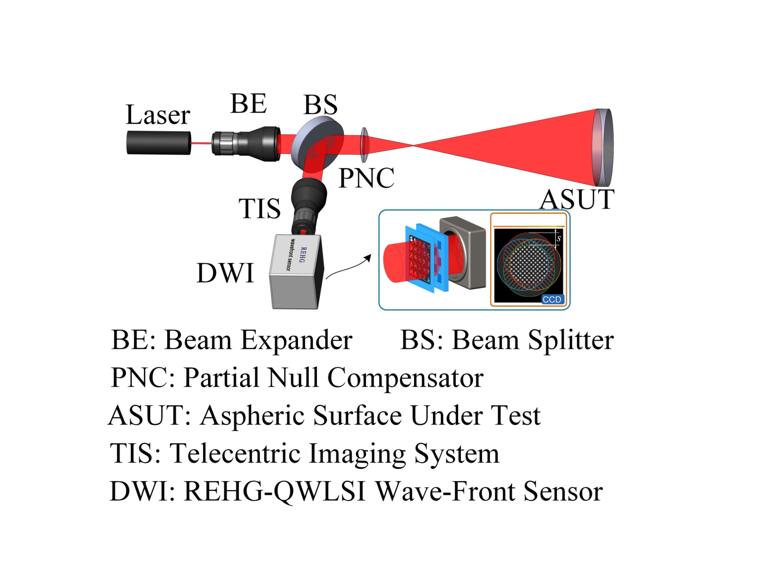
 Abstract
Abstract FullText HTML
FullText HTML PDF 5743KB
PDF 5743KB